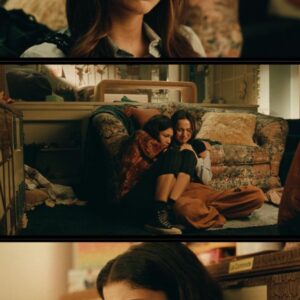
In the world of royalty, where every public appearance is scrutinized, Prince William has consistently shown a more personal side through his love of football. As the President of the Football Association and a lifelong Aston Villa fan, the Prince of Wales often brings his passion for the sport into family outings. Yet, recent events highlight a fascinating nuance: William’s demeanor shifts subtly depending on which of his children joins him in the stands. In 2024, at the men’s Euro final with his son Prince George, William was a bundle of raw energy—fist pumps, leaps, and heartfelt cheers. Fast forward to 2025, and his attendance at the UEFA Women’s Euro final with daughter Princess Charlotte revealed a calmer, more graceful presence—still joyful, but gentler and more composed. This contrast underscores a deeper truth: a father adapting to meet each child where they are, channeling the same profound love through different energies.
The stage for this paternal dynamic was set dramatically in July 2024, when England faced Spain in the Euro 2024 final at Berlin’s Olympiastadion. Prince William, 42 at the time, brought along his eldest son, Prince George, then 10, for what promised to be a historic night. As patrons of English football, the duo arrived in matching navy suits and striped ties, exuding a sense of shared excitement. From the royal box, alongside figures like Prime Minister Keir Starmer and Spain’s King Felipe VI, they embodied the nation’s hopes. But as the match unfolded, their reactions became the highlight, capturing the fiery spirit of father-son bonding.
Cameras caught William and George leaping from their seats when Cole Palmer equalized for England, their fists pumping in unison. The Prince half-jumped, throwing his hands over his face in tense moments, while George mirrored him exactly—hands on face, exclaiming “Oh my gosh!” in disbelief as chances slipped away. Social media erupted with praise for their synchronized energy, with fans calling them “heartbreakingly adorable” and noting how George walked “exactly like his father.” The heartbreak of England’s 2-1 defeat only amplified their passion; William consoled his son with a hug, their disappointment palpable yet united. It was a night full of fire—loud cheers, animated expressions, and that raw, unfiltered enthusiasm that comes from shared adrenaline. William later posted on X: “This time it just wasn’t meant to be. We’re all still so proud of you.”

This outing wasn’t George’s first taste of high-stakes football. The young prince, second in line to the throne, has joined his father at Aston Villa matches and the FA Cup final, often sporting the team’s scarf. Their bond over the sport is evident; George, an avid fan like his dad, thrives in these energetic environments, where fist pumps and leaps feel natural. William’s own history as a supporter—choosing Villa for its “emotional rollercoaster” rather than top-tier teams—fuels this dynamic, turning matches into lessons in passion and resilience.
Contrast this with July 27, 2025, when William attended the UEFA Women’s Euro 2025 final in Basel, Switzerland, this time with Princess Charlotte, 10. The Lionesses, defending champions, faced Spain in a nail-biting clash that ended in England’s penalty shootout victory. Charlotte’s surprise appearance marked her first overseas football match, and the father-daughter duo’s presence added a touch of royal grace to the event. Dressed in a polka-dot dress with ruffled sleeves and a cream cardigan, Charlotte complemented William’s dark suit and red-striped tie, creating a picture of composed elegance.
From the stands at St. Jakob-Park, their reactions were markedly gentler. As Spain scored first, William buried his head in his hands, but Charlotte responded with quiet concern, clasping her hands over her cheeks in shock—mirroring her father’s anticipation but without the explosive energy. When Alessia Russo equalized, they shared smiles and animated discussions, leaning in to chat intently. Tension built through extra time, but their celebrations were proud and joyful, with clapping and warm embraces rather than leaps or fist pumps. Post-match, Charlotte joined William on the pitch to hand out medals, beaming as she congratulated players like Chloe Kelly, who scored the winning penalty. Their joint statement on X read: “What a game! @Lionesses, you are the champions of Europe and we couldn’t be prouder of the whole team. Enjoy this moment England. W & Charlotte.”


This outing highlighted Charlotte’s budding interest in sports, influenced by her parents’ enthusiasm. She has previously sent video messages to the Lionesses with William, wishing them “good luck” before major finals. Yet, the energy was different—full of grace, with Charlotte’s poised demeanor evoking her mother’s style at events like Wimbledon. Fans noted the “sweet dad and daughter moment,” praising their synchronized but subdued reactions.
Why the shift? Body language experts suggest William intuitively adapts to his children’s personalities. With George, the heir apparent, the fiery interactions mirror a mentor-apprentice dynamic, fostering resilience in high-pressure scenarios. George’s mimicry—straightening ties simultaneously or sharing exclamations—shows a bond built on shared intensity. Charlotte, often described as confident yet composed, elicits a gentler response, perhaps echoing William’s protective instincts toward his daughter. As one observer noted, “He’s calmer, more composed—still proud, still joyful, just gentler.”
This pattern extends beyond football. William has spoken of creating a “more modern and ideal” family life, drawing from his own challenging childhood marked by public scrutiny and his parents’ divorce. He prioritizes hands-on parenting, from school runs to involving his children in his superstitions—like repositioning them during tense Villa matches at home to “change luck.” While George joins for more outings, including rugby and cricket, Charlotte’s appearances often blend sport with family bonding, like at Wimbledon where she mirrors Kate’s elegance.
William’s approach reflects broader royal evolution. Unlike past generations, where duty often overshadowed play, he emphasizes casual, tactile interactions—winged embraces in photos, playful repositioning during games. This “detachment from previous generations” allows George, Charlotte, and even young Louis to explore their interests without bias, though all own Villa shirts.
Ultimately, these moments reveal a father whose love is unwavering but flexible. Whether igniting fire with George or embodying grace with Charlotte, William meets each child on their terms, turning football into a canvas for family connection. As England celebrates the Lionesses’ 2025 triumph, the royal family’s story reminds us: same love, different energy—a modern monarchy in action.

